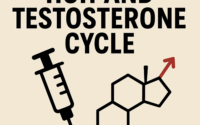Sildenafil Citrate
 What is Sildenafil Citrate?
What is Sildenafil Citrate?
Understanding Viagra: A Deep Dive into Sildenafil Citrate
In the realm of pharmacology, few discoveries have sparked as much conversation, intrigue, and widespread recognition as Sildenafil Citrate, popularly known by its brand name, Viagra. This medication, a revolutionary breakthrough in the treatment of erectile dysfunction (ED), has transcended its medical purposes, becoming a cultural icon since its inception. Its development, impact on sexual health, the mechanism of action, and broader implications in society and medicine offer a profound narrative about human health, innovation, and the complexities of sexual wellness.
The Genesis of Viagra
The story of Viagra begins not with the intention to treat erectile dysfunction, but as a potential treatment for angina pectoris, a condition associated with heart disease characterized by chest pain resulting from reduced blood flow to the heart. In the early 1990s, scientists at Pfizer, a multinational pharmaceutical corporation, were experimenting with Sildenafil Citrate as a means to alleviate this condition by relaxing the blood vessels in the heart. However, during clinical trials, an unexpected and consistent side effect was reported: participants experienced significant improvements in erectile function. This serendipitous discovery redirected the research and development pathway of Sildenafil, leading to its approval by the U.S. Food and Drug Administration (FDA) in 1998 as the first oral treatment for erectile dysfunction.
Cultural and Social Implications
The advent of Viagra did more than offer a viable medical treatment for erectile dysfunction; it initiated a cultural shift regarding sexual health and aging. The introduction of Viagra into the marketplace in the late 1990s disrupted this narrative, bringing ED into public discourse and legitimizing it as a subject worthy of medical attention and compassion.
Moreover, Viagra’s influence extended beyond those directly affected by erectile dysfunction. It played a critical role in destigmatizing discussions around sexual health, fostering a more open and honest conversation about sexual dysfunction and wellness. Additionally, it spurred pharmaceutical innovation, leading to the development of alternative ED treatments and advancing research in sexual health and related areas.
Medical and Societal Implications
While Viagra is heralded for its effectiveness and has undoubtedly improved the quality of life for many, it is not without its criticisms and controversies. The media portrayal and societal perception of Viagra have sometimes reinforced unrealistic expectations about sexual performance and aging, potentially contributing to the medicalization of normal sexual variations and the pressure to use pharmaceutical solutions to address complex psychosexual issues.
Furthermore, the popularity of Viagra has illuminated the challenges of healthcare access and the disparities in the treatment of sexual dysfunction across genders. While men have a growing array of FDA-approved medications for sexual dysfunction, there are fewer comparable options for women, highlighting a gap in the development and approval of female sexual enhancement drugs.
Conclusion
Since its fortuitous discovery, Viagra (Sildenafil Citrate) has not only transformed the treatment landscape for erectile dysfunction but has also catalyzed a broader cultural and medical dialogue about sexual health. It represents a confluence of serendipity, scientific curiosity, and the potential for medical research to significantly alter human lives. As society continues to grapple with the complexities of sexual health and wellness, the story of Viagra serves as a compelling chapter in the ongoing narrative of human health and innovation, reminding us of the importance of openness, research, and the quest to enhance quality of life.


